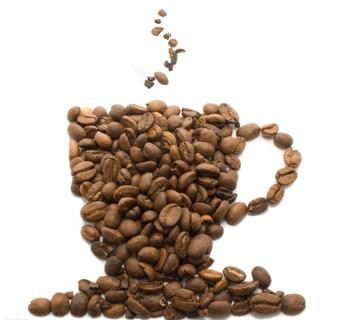Introduction of Coffee Tree species Tibikadi Katie pickup truck

Tiebika (Typica) Tibicati pickup truck
Tiebika (Typica Tibikati pickup) is the species name of coffee beans and is one of the oldest varieties of Arabica.
Iron pickup, also known as the old variety of small-grain coffee, its yield is less, cultivation is difficult, so the price is much higher than ordinary small-grain coffee. Tibica coffee, native to Ethiopia and southeastern Sudan, is the most widely cultivated variety of coffee in the Western Hemisphere. The plant is stronger, but not light-tolerant, and the yield is higher in Hawaii. The top leaf of Tibika is red and copper, which is called red top coffee.
Typica Tibica (Tibica): the oldest native variety in Ethiopia, all Arabica are derived from Tibica. It belongs to the ancient coffee with elegant flavor, but its physique is weak, its disease resistance is poor and it is easy to catch rust leaf disease, and its fruit yield is also low, which is not in line with economic benefits. In recent years, Tibika has been gradually replaced by Kaddura and Kaduai in Central and South America, which is becoming more and more rare. Although Tibica has a good flavor, it is not nearly as popular as bourbon. One of the features is that Tibika's parietal leaves are bronzed. Mantenin, Blue Mountain, Elephant Bean, Kona, Yunnan Xiaodou, Rosa, and so on, are all derived varieties of Tibika. Tibica's beans are larger, pointed, oval or thin, different from Bourbon's round beans.
Bourbon: juxtaposed with Tibica as an ancient and excellent variety. Some botanists even believe that Bourbon is a variant of the early Tibika transplanted to Yemen, where the bean shape changed from a thin tip to a round body. It was not until 1715 that France transplanted Mocha round beans from Yemen to the island of Bourbon on the east coast of Africa, and it was not until 1715 that it received the name round bourbon. Bourbon, which spread to Brazil and Central and South America in 1727, is also round beans. In addition, the British transplant of Yemeni mocha to St. Helena Island in 1732 was also a round bean. interestingly, it did not pass through Bourbon Island, but it was named Green Top Bourbon. It can be seen that the industry thinks that all the world's bourbon beans come from Bourbon Island is a big misunderstanding. It is important to recognize that there are many round bourbon beans that spread directly from Yemen without passing through the island of bourbon. In 181○, some of the round beans on Bourbon Island mutated into pointed beans, also known as the "pointed body of bourbon." its caffeine content was only half that of ordinary coffee, and its output was low, weak, and extremely rare.
With the exception of Ethiopia, the origin of Arabica, the mutants or mixed-race varieties cultivated or found in Central and South America, India and East Africa are mainly Tibica and bourbon, and the genetic complexity is far lower than that of Ethiopia. this is the main reason for the weak physique and poor disease resistance of Arabica outside Ethiopia.
In addition, the biggest thing that bourbon and Tibica have in common is that shade trees must be "protected" to help block the sun. These two ancient varieties, such as unshaded trees, will not be conducive to growth and flavor development.
Bourbon list
Bourbon (Bourbon is also transliterated as Bourbon list): it is an ancient and excellent variety alongside Tibica. Some botanists even believe that Bourbon is a variant of the early Tibika transplanted to Yemen, where the bean shape changed from a thin tip to a round body.
Bourbon coffee is a variety of small-grain coffee second only to Tibica. At first, the main branch and the trunk grew upward at 45 degrees, and drooped with fruit load, the lateral branches were denser, the fruit was more, and the yield was higher. But the berries are smaller and ripen more slowly. The top bud and tender leaves of Bobang are green, called green-top coffee.
It was not until 1715 that France transplanted Mocha round beans from Yemen to the island of Bourbon on the east coast of Africa, and it was not until 1715 that it received the name round bourbon. Bourbon, which spread to Brazil and Central and South America in 1727, is also round beans. In addition, the British transplant of Yemeni mocha to St. Helena Island in 1732 was also a round bean; interestingly, it did not pass through Bourbon Island, but it was named Green Top Bourbon, so it can be seen that it is a big misunderstanding in the industry that all the world's bourbon beans (Bourbon is also transliterated as Bourbon list) come from Bourbon Island. It is important to recognize that there are many round bourbon beans that spread directly from Yemen without passing through the island of bourbon. In 181○, some of the round beans on Bourbon Island mutated into pointed beans, also known as the "pointed body of bourbon." its caffeine content was only half that of ordinary coffee, and its output was low, weak, and extremely rare.
With the exception of Ethiopia, the origin of Arabica, the mutants or mixed-race varieties cultivated or found in Central and South America, India and East Africa are dominated by Bourbon and Bourbon, and the genetic complexity is much lower than that of Ethiopia, which is the main reason for the weak physique and poor disease resistance of Arabica outside Ethiopia.
In addition, the biggest thing that bourbon and Tibica have in common is that shade trees must be "protected" to help block the sun. These two ancient varieties, such as unshaded trees, will not be conducive to growth and flavor development.
Rose summer (Geisha geisha coffee)
Rosa Geisha (Geisha) Origin: Cauca Valley, Colombia: 1700-1950 m above sea level
Variety: Geisha (Rosa, Geisha) delivery season: March 2012
Flavor: premium Darjeeling black tea, orange peel, tangerine peel, yellow sweet lemon, black sugar sweet, juice sweet, citrus juice, sweet osmanthus, rum tail rhyme
Taste: soft but not irritating fruit acidity, thick feeling is excellent, black tea tail rhyme, black tea comfortable astringent feeling of this bean, I have also tasted this bean, in Hankou 63 manor coffee, at that time is just opened on Weibo to summon the industry to do a coffee tasting meeting, but with me above is not a manor beans, these are manor beans, rose summer won the crown in many cuping (cup test) competitions this year At that time, we tried hand pressure, siphon, hand flushing, several methods have different taste, in which the siphon taste is slightly sour, has a strong fruit flavor, and leaves a hint of caramel aftertaste after drinking the cup. But Rosa is very valuable, and many of them are available in limited quantities.
In 1931, he was exported to Kenya in obscurity from Geisha Mountain Mountain in southwestern Ethiopia (coincidentally synonymous with Japanese geisha). He traveled to Tanzania and Costa Rica, and was transplanted to Panama in the six ○ years. It took him nearly half a century to make a splash, defeating the victorious armies such as Bourbon, Kaddura, Kaduai, Tibica and so on. Won the first prize of two ○○ five, two ○○ six and two ○○ seven Panamanian national treasure bean cup test competition in one breath. In the seventh year of ○○, the International famous Bean Cup Test sponsored by the American Fine Coffee Association won the championship again, and the bidding price was even sold at US $130 per pound, setting an all-time record for the price of competition beans. It is reported that the next Panamanian national treasure bean competition will be divided into two groups: rose summer and non-rose summer, so as not to be robbed of the brilliance of other varieties by rose summer. Rosa is a member of the Tibika family, but it became famous more than 70 years after leaving Ethiopia, and fulfilled the saying that Ethiopia is a treasure trove of Arabica genes. Giving a variety to go abroad is enough to stir up trouble in the coffee market.
Pacamara (Pacamara)
Pacamara (Pacamara): the pedigree is very complex. It is a hybrid of the Tibika variety elephant bean and the bourbon variety Pacas. Huge beans, second only to elephant beans, is a rising star in El Salvador and a hybrid breed of high-quality coffee all over the world in the past two years. Won two ○○ seven Guatemala and Honduras [COE] double championships, but also arranged to host the top three awards in El Salvador. The name "Pacamara" is very good. It is a compound word of Pacas [Pacas] and elephant bean [Maragogepe]. Pacamara is an excellent variety produced by the Salvadoran Coffee Research Institute from 1957 to 1958. It was not until recent years that it became the darling of boutique coffee.
Important Notice :
前街咖啡 FrontStreet Coffee has moved to new addredd:
FrontStreet Coffee Address: 315,Donghua East Road,GuangZhou
Tel:020 38364473
- Prev

What is the basic knowledge of Italian Coffee
Espresso is basically a male drink, energetic and unpretentious, and an enhanced version of kung fu coffee for real coffee ghosts. Double does not mean doubling the amount of coffee, but the same amount of water, double the amount of coffee powder, coffee still looks like that, but the concentration has doubled. The level is equivalent to that in spirits and perfumes.
- Next

The skill of blending coffee beans basic knowledge of fine coffee
Blending coffee is not a random mix of coffee beans. Sometimes the blending of two kinds of boutique coffee will suppress each other's unique flavor; blending is not simply blending several kinds of boutique coffee together. Matching is like the painter adjusting and creating charming colors in the color palette, the mixer can reconcile the attractive taste according to the different characteristics of the coffee beans. It is said that matching is an art
Related
- Beginners will see the "Coffee pull flower" guide!
- What is the difference between ice blog purified milk and ordinary milk coffee?
- Why is the Philippines the largest producer of crops in Liberia?
- For coffee extraction, should the fine powder be retained?
- How does extracted espresso fill pressed powder? How much strength does it take to press the powder?
- How to make jasmine cold extract coffee? Is the jasmine + latte good?
- Will this little toy really make the coffee taste better? How does Lily Drip affect coffee extraction?
- Will the action of slapping the filter cup also affect coffee extraction?
- What's the difference between powder-to-water ratio and powder-to-liquid ratio?
- What is the Ethiopian local species? What does it have to do with Heirloom native species?

